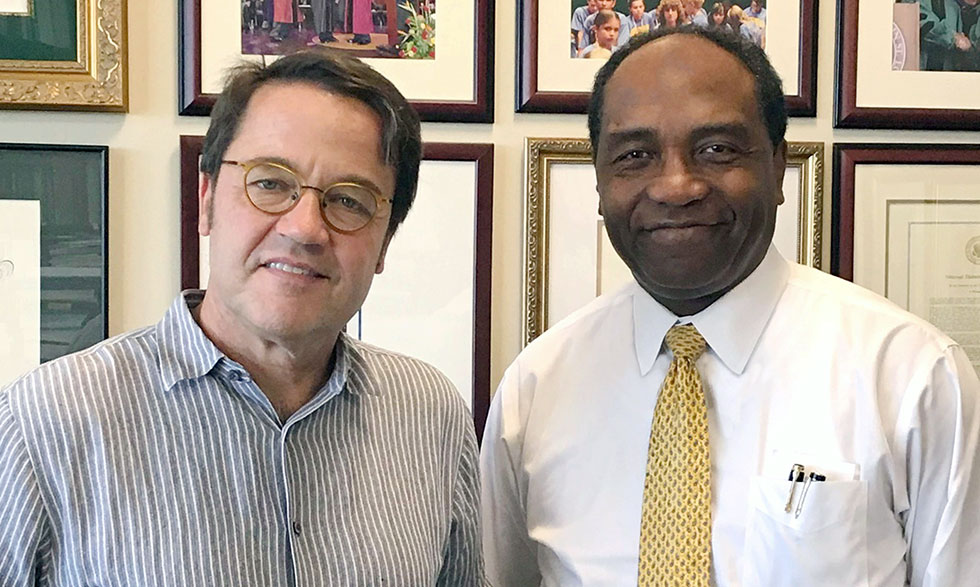
Last updated on August 7th, 2024 at 12:17 pm
[Introduction]
Many people with sickle cell disease (SCD) are healthier and living longer thanks in part to research led and supported by the National Institutes of Health (NIH). Recent efforts have led to breakthroughs in treating and even curing the red blood cell disease.
In order to have SCD, a person must inherit the sickle cell trait from their birth mother, father, or both parents. If you have just one trait, you can live a very long time. If you have the trait from both parents, SCD can be extremely painful and lead to death.
“Many people don’t realize the severity of this disease,” says John Tisdale, M.D., senior investigator at NIH’s National Heart, Lung, and Blood Institute, who leads NIH sickle cell disease research along with Griffin Rodgers, M.D., director of the National Institute of Diabetes and Digestive and Kidney Diseases (NIDDK).
“It can cause severe, debilitating pain that stops you from doing all the things in life that people try to accomplish,” Dr. Tisdale adds. “It affects patients and families and support systems.”
In the U.S., more than 100,000 people have the disease and it’s more common in African Americans and Hispanics. Millions of people worldwide suffer from the disease too, including large populations in India and the Middle East.
The breakthroughs have been remarkable and lifesaving for many. However, not all those with SCD can be substantially helped or cured by current treatments. And many patients, especially those in other countries, have limited access to current treatments for the disease.
Researching more cures
That’s why researchers like Dr. Rodgers and Dr. Tisdale continue testing new ways to treat the disease.
They’ve been working side by side for years with the same goal in mind: to cure all people in simpler, less expensive ways.
Their recent research aims to help more patients find a cure through expanded bone marrow transplant treatment and gene therapy.
“The majority of patients with SCD are still suffering as they were a decade ago despite these advances,” says Dr. Rodgers.
Other treatments for SCD include hydroxyurea, a medication developed for this use by Dr. Rodgers and colleagues. It has been approved for use in adults for years but was only recently approved for children in the U.S.
While it’s not a cure, hydroxyurea helps red blood cells better carry oxygen in patients with moderate to severe SCD. This lessens pain and helps patients live longer.
How bone marrow transplants work
In a more traditional bone marrow transplant, a patient is first treated with chemotherapy. Then, he or she receives a bone marrow transplant from a healthy donor.
But bone marrow transplants are often expensive, time consuming, and hard to get.
“One problem with bone marrow transplants is that you need to have a family member whose genes match,” says Dr. Rodgers.
Other problems include the risk of stroke, which people with SCD are more susceptible to because of the disease’s heavy stress on their organs.
More treatment options
To address these limitations, Dr. Rodgers, Dr. Tisdale, and their research teams are studying how to repair bone marrow through gene therapy. This treatment doesn’t require a donor.
“Now we can take the patient’s own bone marrow, use an engineered virus that carries genes to the bone marrow, and give repaired bone marrow stem cells back to the patient so that healthy bone marrow cells can grow,” Dr. Tisdale says.
The procedure has been effective in more than 90% of adults in a number of small clinical trials already.
Researchers are working hard to test it in larger clinical trials soon.
The future of sickle cell treatment
Ultimately, Dr. Rodgers and Dr. Tisdale hope to work towards more affordable, accessible treatment options—such as bone marrow repair.
“If we could cure sickle cell disease in a safe and effective way, such as a pill that can reverse the disease, that would be a home run,” says Dr. Tisdale.
Dr. Rodgers adds: “It sounds like science fiction now, but that’s what we think about for the future.”
For those with the disease, Dr. Rodgers and Dr. Tisdale recommend seeking out a clinical trial through ClinicalTrials.gov. Patients can get access to new treatment options and help researchers like Dr. Rodgers and Dr. Tisdale better understand the disease.
Dr. Rodgers provides an overview on how clinical trials work in this video from NIDDK.
